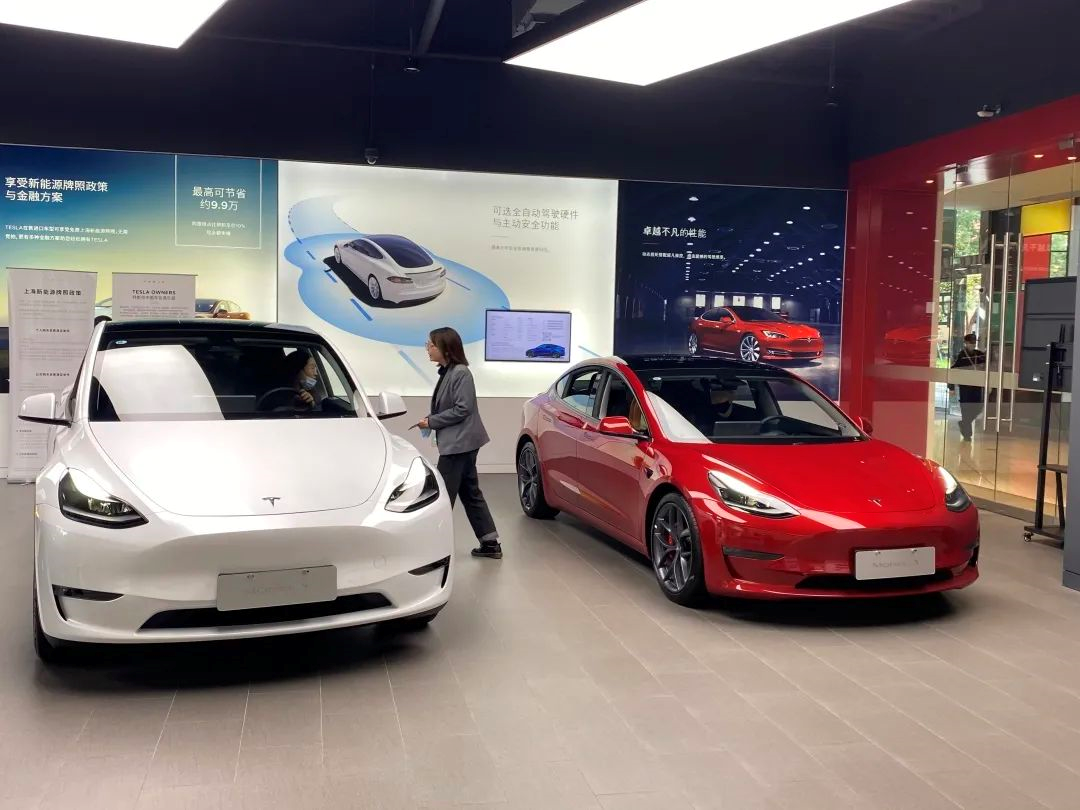This article is authorized by Chuxingyike (WeChat ID: carcaijing) and created by the Traffic Industry Group of Caijing Magazine. The authors are Wang Jingyi, Qi Zhanning, Qiu Yao, and Li Xiyin, edited by Shi Zhiliang.
With sales topping 33,000 units, Musk is not worried about demand
“Today, we’ve sold six cars and my voice is hoarse,” the representative at the Tesla Experience Center in Changning, Shanghai told Chuxingyike (ID: carcaijing) on the evening of October 24th.
That day was the second day after the announcement of the results of Shanghai’s October fuel vehicle license plate auction, with a bid rate of only 4.9%. As it was Sunday, Tesla stores were bustling.
This is a microcosm of Tesla’s soaring sales in China. In September this year, Tesla delivered 52,153 new cars in China, with both monthly sales volume and year-on-year growth rate exceeding 300%. Since the beginning of this year, Tesla’s sales in China have exceeded 200,000 units.
Tesla’s cost reduction measures are closely related to its soaring sales. In July this year, Tesla announced the launch of the Made-in-China Model Y Standard Range, which sells for only RMB 276,000 after subsidies, lower than the long-range version currently on sale by RMB 71,900.
Public information shows that the number of orders for the “poor man’s version” Model Y exceeded 10,000 on the day of its launch, completing the goal that other models took months to achieve in just one day. In September this year, the Model Y sold a total of 33,033 new cars, becoming the champion in SUV sales in both new energy vehicles and fuel vehicles.
Cui Dongshu, Secretary-General of the Joint Conference on Passenger Car Information in China, analyzed for Chuxingyike (ID: carcaijing) that Beijing, Shanghai, Shenzhen, Guangzhou, Hangzhou, and other cities with limited administrative policies and strong economic strength are Tesla’s largest markets.
“The sales of new energy vehicles this year are very good, which indicates that the nearly 20-year innovation preparation of new energy vehicles, from innovation to industrialization, to solving the use environment and other processes, has achieved results and has entered a period of rapid growth,” said Fu Bingfeng, Executive Vice President and Secretary-General of the China Association of Automobile Manufacturers to Chuxingyike (ID: carcaijing).
It should not be overlooked that, as the most high-profile electric vehicle company and management, Tesla and Musk have their own flow IP. Their commercial moves, like the wings of a butterfly flapping at Amazon, can directly stir up the competition in the global electric vehicle market. As a “game theory machine” with no emotions, the players at the table are trying to guess his thoughts and watching his next move…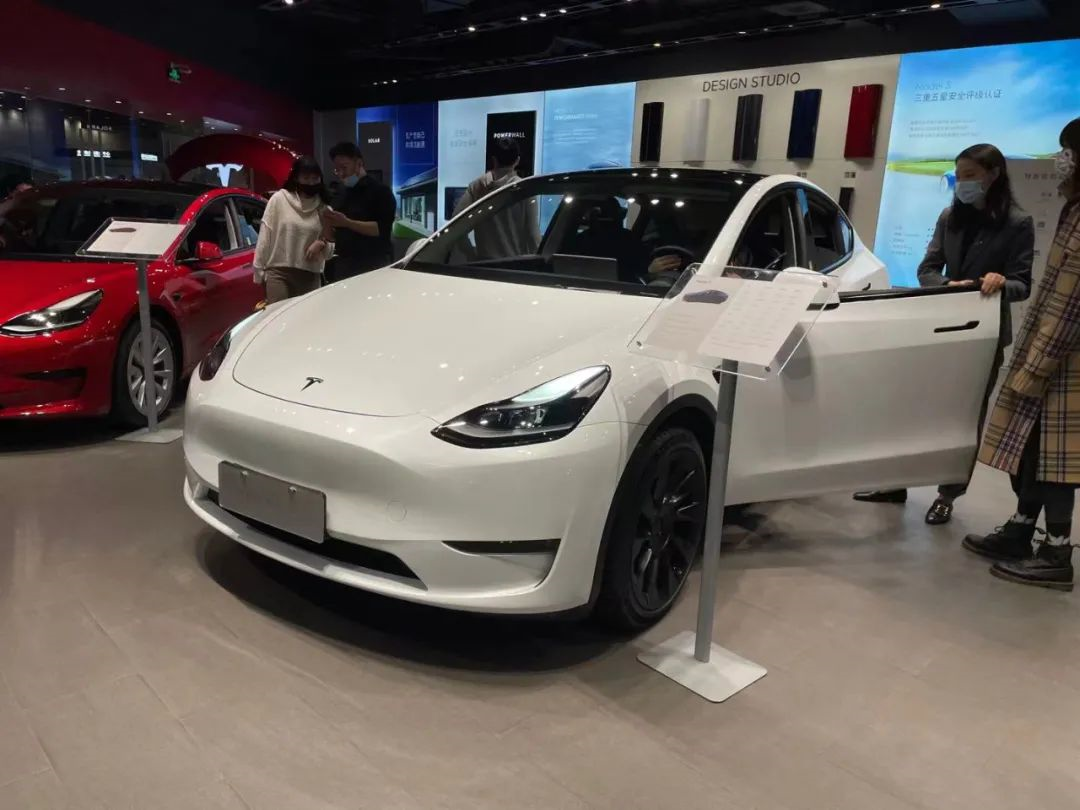
Price Reduction, Pulling Peers into a “Prisoner’s Dilemma”
“The 270,000 RMB price is irresistible.” Mr. Yang, a Tesla owner from Foshan, Guangdong, told Carcaijing(ID: carcaijing).
Mr. Yang is a typical family needs-based user. In order to provide a more comfortable space for his children, he had been hesitating between BBA and Lexus for several months. He finally decided to reserve the “cost-effective, worry-free, and extremely spacious” Tesla Model Y Standard Range version, which was over 100,000 RMB less than BBA (Mercedes-Benz, BMW, Audi), and the decisive factor that convinced him to buy it. In terms of brand and performance, he prefers the BMW X3 and Lexus RX, but the landed prices of both cars are over 400,000 RMB.
Another car owner told Carcaijing (ID: carcaijing) that the Model Y doesn’t need maintenance and doesn’t consume fuel. There are basically no expenses afterwards, so he can save a lot of money in a year.
Perhaps having tasted the sweetness of the Model 3 price reduction last year, in July Tesla launched the Standard Range version of the Model Y with lithium iron phosphate battery, which immediately attracted many cost-effective-seeking users.
A salesperson at the Guangzhou Tianhe Guangyue Tian Di Experience Store told Carcaijing (ID: carcaijing) that the customers who buy the Standard Range version of Model Y are the most because it is completely sufficient for standard range in the city and the lithium iron phosphate battery is capable of handling most temperature environments in Guangdong. “Although ternary lithium is resistant to low temperature, we will recommend not to fully charge it. On the contrary, lithium iron phosphate can be fully charged, so the Standard Range version sells the best.”
“The success of the Model Y is mainly due to its price reduction, which greatly improves its cost-effectiveness, so its market recognition has also been continuously improving. At the same time, as a technology product, it continuously strengthens its own functions, so everyone also recognizes its product.” Cui Dongshu told Carcaijing (ID: carcaijing).
A Model Y owner from Chengdu said that she was initially attracted by the space, but after using it, she fell in love with the camping mode of Model Y. “You can turn on the air conditioning, ventilation, and fold down the rear seats. Even in cold weather, you can use the bonfire mode. Using air conditioning all night only consumes 80-90 kilometers of electricity, which I think is not too power-consuming.”
“There aren’t many cheap and stylish things, and Tesla is one of them.” A car owner told Carcaijing (ID: carcaijing) his reasons for buying a car.Sales have surged and all car purchase incentives have been cancelled. Previously, if a new car owner purchased a car through a referral from an existing car owner, both parties would receive a reward of free 1500 km supercharging for 6 months. However, this referral reward has been cancelled since September 18, and currently there are no incentives available for car purchases.
According to CarCaijing, Tesla employees can purchase cars at the same price as regular consumers, but they can also receive free access to the Full Self-Driving (FSD) function, which is worth 64,000 RMB.
Public information shows that in the third quarter of this year, Tesla’s revenue in the Chinese market reached 3.113 billion US dollars, an increase of 78.5% year-on-year. In the first three quarters of this year, Tesla’s revenue in the Chinese market was 9.015 billion US dollars, surpassing last year’s total revenue of 6.662 billion US dollars.
At the Tesla 2021 Shareholders’ Meeting on October 8, CEO Elon Musk praised the performance of the Shanghai factory, stating “the Shanghai Gigafactory has amazing vehicle quality and operational efficiency, doing an excellent job!”
According to foreign media reports, Tesla has fully repaid the loan it took out to build the Shanghai Gigafactory, totaling $1.4 billion, in just 16 months, which was originally scheduled to be repaid within 5 years (60 months).
Tesla’s strategy of reducing prices without sacrificing quality has left its competitors in tears while Musk is laughing. As the concept of new energy vehicle consumption gradually becomes popular, combined with support policies from the industry, the best strategy for new energy vehicle companies is to hold on to their original prices and earn corresponding profits with fossil fuel-powered cars as the anchor. However, this attack and defense alliance has been broken by Tesla, which took the lead in lowering prices. Competition has forced car manufacturers into a price war to win customers over. More car companies are lowering prices with increasing frequency and magnitude, even though they may understand that exchanging price for quantity may not necessarily result in high profits. Nonetheless, they hope to outlast their competitors and prevail.
By 2030, Musk has set Tesla’s sales target at 20 million units per year and expressed confidence in maintaining at least a 50% delivery growth rate. However, Tesla’s sales in 2020 were just over 500,000 units.
Roland Berger’s Global Senior Partner and Head of Automotive Industry Zheng Yin analyzed for CarCaijing that the concept of high-tech intelligent electric vehicles was first proposed by Tesla, and the brand holds a high premium and a unique market position. In addition, Tesla’s leading autonomous driving function is also an attractive feature.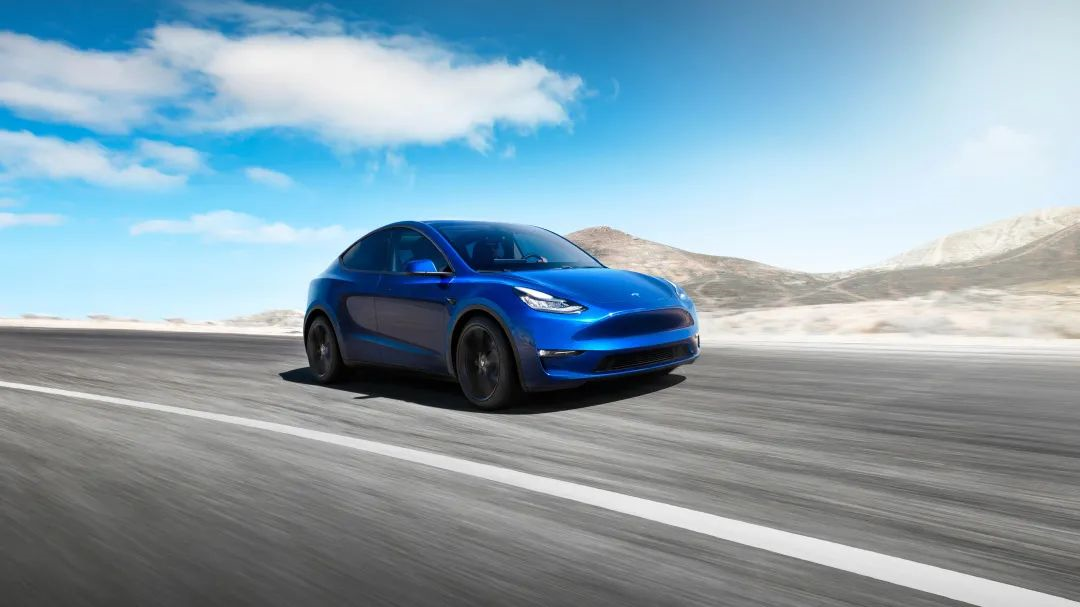
Behind the CATL, other players still keen on hitchhiking
In September, Model Y has taken over the long-time SUV sales champion Haval H6.
As of August this year, Haval H6, which has been on sale for 10 years, has been the best-selling SUV in China for 99 months, with Changan CS75, which has been targeting it all the time, and the SUV pioneer Honda CR-V coming in second. However, in September, it was surpassed by the pure electric vehicle that was launched earlier this year – Tesla Model Y.
It should be noted that these are two completely different car models with no direct competition – Haval H6 starting from 9.89 million yuan, is a representative of domestic brands, emphasizing cost performance; Model Y starting from 27.6 million yuan, with strong sense of technology and outstanding brand power.
This is exactly the terrible thing about Tesla as a “price butcher.” Tesla’s “price reduction-sales increase-cost reduction-price reduction again” mode is causing a chain reaction in the industry, and it is affecting every car company from BBA to domestic brands.
However, it should be pointed out that the sales of a single month are special. According to Tesla’s plan, cars produced in the first half of the year will be mainly exported, while those in the second half of the year will be for the domestic market. The “big sales” in September are closely related to Tesla’s delivery schedule, and even a concentrated expression of the backlog of orders in the past few months.
“Model Y surpassing Haval H6 is just a phased phenomenon, but Tesla’s sales are indeed getting stronger and stronger, and will become stronger and stronger. This is recognized by everyone.” Cui Dongshu told Chuangyi Yike (ID: carcaijing).
According to the China Association of Automobile Manufacturers statistics, from January to September this year, sales of new energy vehicles reached 2.157 million units, an increase of 185.3% compared to the same period last year. Among them, the sales of passenger cars reached 2.045 million units, a year-on-year increase of 199%.
Not only Tesla, Byd, Wuling, Changan, XPeng, Ideal, and other brands’ partial models’ sales in September have increased by more than 100% year-on-year. Byd’s Qin PLUS DM-i and Song DM models are following closely behind Tesla Model Y and 3 in sales, with monthly sales breaking 10,000 units.
Among the new forces in the car-making industry, XPeng P7 and Ideal ONE sold 7,512 and 7,094 units respectively, with year-on-year increases of 192% and 102.5%. Not to mention the always popular Wuling Hongguang MINI, with monthly sales exceeding 35,000 units, a year-on-year increase of 142.6%.Although the sales of new energy vehicles are catching up with each other, they are not willing to compete in the stock market. The fuel vehicle market is the big cake coveted by new energy vehicle companies. In this sense, the relationship between Tesla and other new energy brands is a positive and zero-sum game, and new energy and fuel vehicles are closer to zero-sum games.
Xu Changming, Deputy Director of the National Information Center and Senior Economist, pointed out that since 2019, the proportion of private new energy vehicles in the total increase of new energy vehicles has reached 54.3%, and the purchasing volume of private new energy vehicles has rapidly increased. The data he cited showed that this proportion increased to 71.5% in 2020 and 77% in the first 7 months of 2021.
If cars are divided into two camps according to energy types, namely new energy and traditional energy, then Tesla is naturally the vanguard of new energy vehicles. For many global new energy vehicle brands, hitchhiking on Tesla and crossing the river is a high-quality choice. OTA upgrades, advanced autonomous driving, and commercial direct sales-Tesla, the swim is on your court, your lesson is my experience.
William Li, CEO of NIO, once told Car News Agency (ID: carcaijing): “There is not much competition between NIO and Tesla. Our competitors are BBA. We want to convert the owners of BBA fuel cars in the same price range into our own users.” Shen Hui, CEO of WM Motor, also believes that WM’s market target is users of GM, Volkswagen, and Toyota, and that it only makes sense to convert fuel vehicle users into intelligent electric vehicle users.
Previously, there was another low-level hitchhiking phenomenon. In the past, when various countries implemented aggressive new energy vehicle industry policies, both Tesla and the A00-level electric cars resembling “Old Man Happy” could receive government subsidies. At that time, instead of investing in technology research and development, it was better to use the lowest production cost and lower technical investment to maximize sales and obtain government support policies and industry subsidies. In the past few years, hundreds of domestic new energy vehicle brands in China have hitchhiked on Tesla and industry development.
Fortunately, after being “made in China”, Tesla, which no longer faces high tariffs, has truly become an effective catfish. It makes ambitious domestic new energy vehicle companies understand that only by laying out core competitiveness can they go further and earn greater profits in a broader future market.
Zhang Rong, Secretary-General of the New Energy Vehicles Branch of the China Automobile Dealers Association, believes that whether new energy vehicles are taking a large share of the fuel vehicle market still needs to be observed, because the decline in fuel vehicle sales is caused by a global shortage of chip supply. “In a sense, the month-by-month growth of new energy vehicles is still ‘exiting together’, rather than replacing fuel vehicles on rigid demand.”
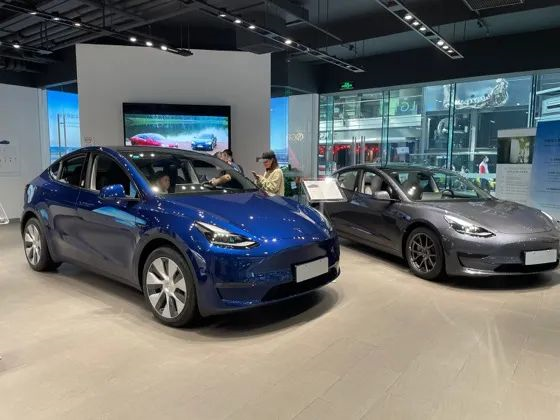 ## Create a Rival for Yourself
## Create a Rival for Yourself
The price-reduced Model Y is squeezing Tesla’s own Model 3 sales.
In September, sales of the Model 3 amounted to 19,120 vehicles, a year-on-year increase of 68.8%, which was somewhat lagging behind other new energy vehicle models with doubled sales. This also reflects that the potential of SUVs in the new energy vehicle market is still comparable to sedans.
Surprisingly, the Model Y has become a best-seller at a time when new automakers in China are entering the sedan market.
Before 2020, new energy vehicle companies in China were generally focused on SUV models, with models such as the WEY EX5, XPeng G3, Li Xiang ONE, and NIO ES8 achieving good sales in different price ranges. At that time, Model Y had not yet been released, and Tesla relied on the Model 3 to lead the market.
However, since XPeng P7 was launched last year, NIO, JIMU, WmAuto, and Zeekr have all created “sedan brands”.
A senior executive of a new energy vehicle company said to “Caixin” (ID: carcaijing), “More than ten years ago, sedans were the mainstream in the market, but after models such as Honda CR-V and Volkswagen Tiguan were launched, SUVs became popular. After entering the era of intelligent electric vehicles, SUVs became boring, and mainstream markets prefer more personalized sedan products.”
Unexpectedly, the Model Y has emerged at this time, just as the new automakers focus on “sedans”.
Compared with Tesla’s hot-selling Model 3, the advantages of the Model Y are very obvious: the same technology experience, appearance, higher mileage and vehicle space, but with a price difference of only 40,000 yuan, many car owners have chosen the Model Y.
A salesperson at the Chaoyang Qiaofu Fangcaodi store in Beijing said to “Caixin” (ID: carcaijing) that the Model Y is already the best-selling model in the store, with seven out of ten customers buying it, and the remaining three choosing the Model 3.
Currently, according to Drew Baglino, Tesla’s vice president of technology, “Model 3 is the best-selling luxury sedan in the global market.” But Musk said that next year, he expects the sales of the Model Y to surpass that of the Model 3, becoming the best-selling car globally.
“Have more children and be better at fighting” and “There is always one suitable for you” are a few product strategies used by many car brands, but in Tesla’s case, the Model Y at 276,000 yuan and Model 3 at 236,000 yuan are competing against each other.According to the data tracked by EV Sales Blog, a firm that tracks electric vehicle sales, Model 3 achieved a global sales volume of 365,000 units in 2020, accounting for a 12% share in the new energy vehicle market and 72% of Tesla’s total sales. However, it seems unlikely that the sales volume can be maintained for another year due to the trend of Model Y squeezing into the Model 3 market.
Chui Dongshu, an industry expert, expects that the Model 3 will continue to reduce prices as it currently enjoys an extremely high profit margin of 30%, which is far higher than the average level of the automotive industry, leaving room for further price reductions.
Elon Musk is skilled at turning disadvantages into advantages by treating himself as an opponent and assuming that the opponent knows more than he does. Intel, which understood this principle well, created “Moore’s Law,” which states that any company in its industry must be the first to eliminate its own products and develop new ones. In the early 1990s, even though the 486 chip was dominant, Intel chose to fully devote itself to developing the Pentium chip by defeating itself and iterating itself.
If the Model 3 continues to reduce prices from 236,000 yuan, it will continue to squeeze the market space of existing domestic brands (100,000-150,000 yuan) and mainstream joint venture (150,000-200,000 yuan).
As Morgan Stanley, an investment bank, said, Tesla is a company that aims to “continuously reduce prices, expand segmented markets, and increase product accessibility to consumers.”
Model Y’s sales crown is due to both high consumer enthusiasm and Tesla’s superior position in terms of chip and upstream raw material supply, ensuring timely delivery.
Since last year, global chip capacity constraints have spread to various industries, including the automotive industry. In addition to the most obvious epidemic factors, natural disasters and trade environments overseas are also impacting the automotive chip supply chain. Against this backdrop, most fuel vehicle companies are constrained by production capacity and even some companies have announced production stops.
According to research firm AutoForecast Solutions, as of September 26 this year, the chip shortage has caused a cumulative global auto production cut of 8.934 million units, with the Chinese market having a cumulative reduction of 1.814 million units, accounting for 20.3% of the total.Finding “chips” has become the primary challenge for the automotive industry this year, and Tesla has its own unique “problem-solving approach” in this regard.
“Many car companies, such as large joint venture companies, have incorporated China’s procurement system into their global procurement system, generally adopting stable long-term procurement agreements. Therefore, in the case of chip shortages, they can only lie down and stop production. Some companies are more flexible and try various ways to find resources to ensure production, and this is where the difference lies.” Li Shaohua, deputy secretary-general of the China Association of Automobile Manufacturers, told Caixin (ID:carcaijing).
Tesla CFO Zach Kirkhorn said during the third-quarter earnings conference call that currently the most affected are nickel and aluminum, namely nickel used in the battery and aluminum used outside of the battery. Some raw materials are directly contracted, so the impact has no buffer period. Of course, there are also long-term supply commitments and contracts, and joint cost sharing projects for some price index fluctuations. The market changes have been conveyed to Tesla’s product production. Although there is currently no major impact, it is by no means insignificant.
To solve short-term supply problems, Tesla has tried various methods. Tesla’s global vice president, Tao Lin, said that its core chip components are all developed independently and outsourced to reduce external dependence. In addition, some chip functions are replaced by software to cope with the shortage of chips. Drew Baglino added that diversifying raw materials is also under consideration, and battery production does not necessarily have to use nickel or cobalt.
A Morgan Stanley report pointed out that Tesla can ensure chip supply because of its strong vertical integration capabilities, self-developed chip capabilities, strong negotiation capabilities, and relatively small scale.
The report analysis said that Tesla may be the manufacturer with the highest degree of vertical integration in the world, so Tesla can learn about the situation of the supply chain earlier and use multiple suppliers to ensure supply. At the beginning of this year when production was stopped, Tesla had begun to develop alternative MCU chips and firmware to solve the MCU chip shortage problem.
Therefore, the competition between Tesla and other car brands is not only about attracting consumers but also about competing for limited chip and raw material supply to ensure their own production capacity. The competition for the supply chain may have a more far-reaching impact.
“To all who have, more will be given, and they will have an abundance; but from those who have nothing, even what they have will be taken away.” This is fully reflected in Tesla, and the strong market demand and brand reputation have given it a higher negotiating power in front of suppliers. Tesla, which is committed to ensuring the supply, can deliver more cars and stabilize production costs, forming a virtuous cycle.
Data from US investment bank Wedbush shows that Tesla’s demand is currently about 10% higher than supply, which is the main reason limiting sales expansion.
“At present, Tesla’s main problem is production capacity, not demand,” Musk said on October 26.
Tesla's development process in China reflects a lot of game theory concepts. Game theory requires not only theoretical learning, but also a lot of practice. We recommend watching the first domestic reality game experimental program "Win in 21 Days", exclusively broadcasted by the Baidu APP.
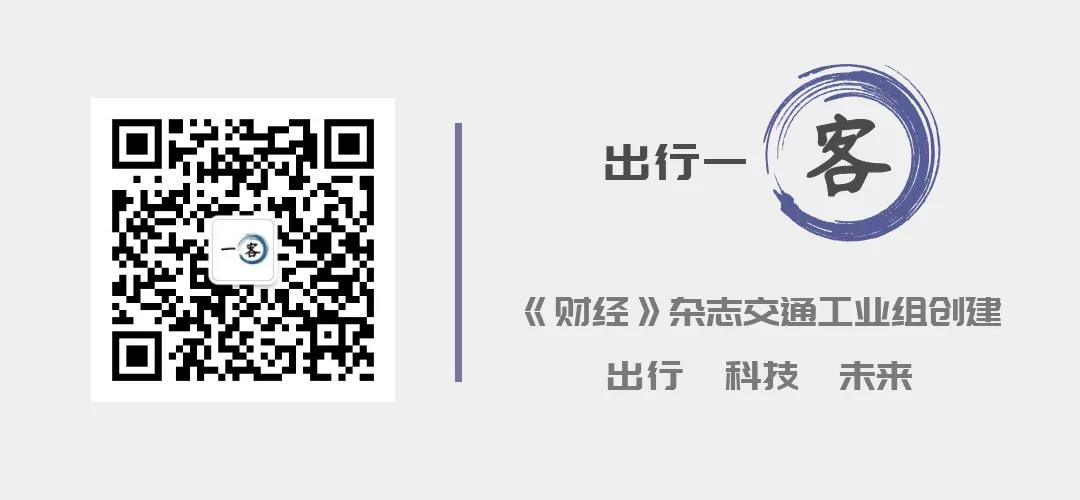
This article is a translation by ChatGPT of a Chinese report from 42HOW. If you have any questions about it, please email bd@42how.com.
